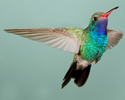The list of techniques and remedies I have tried over the past 8 years is enormous. That is one of the reasons I wrote From Nightmares to Miracles. A person afflicted with a medically incurable illness can burn through a considerable amount of time, money, and energy trying to find alternative approaches that work. These are three vital resources that most people with ALS (PALS) don’t have in abundant supply. In the book, I discuss dozens of approaches including herbal remedies, vitamins, homeopathic treatment, electronic and frequency devices, spiritual healing techniques, exercise, diet, and more. I explain what worked for me, what didn’t, how I arrived at my current protocol, and why I believe that what I have learned has implications far beyond recoverin from ALS. While the same approach may not work for everyone, I believe there are elements of the practices I follow that have universal application.
It would probably help to alleviate some healthy skepticism by providing some evidence for my claims. So, let me give you some. Late 2006, was a huge turning point for me. My weight had dropped to a mere 99 lbs. This was barely more than half of my pre-ALS weight. My fairly athletic, 5’11’’ frame typically weighed in at about 185 lbs. prior to onset of the disease. By the end of 2006, my 99 lb., wheelchair- bound presence resembled that of someone who had barely survived Auschwitz. Every rib in my torso protruded though my skin. My arms had grown so weak that they required rest after two hours of moving a computer mouse. My skin was pale and dry, requiring lotion on a daily basis to avoid breakdown. Fatigue made afternoon naps necessary to get through the day. Restlessness in my legs from poor circulation made sleeping for more than two hours at a time a rare occurrence. Chronic joint and muscle stiffness and cramping interfered with sleep, and caused excruciating pain when being lifted out of bed in the morning.
Today, I weigh 138 lbs. Health practitioners are constantly amazed by the color and tone quality of my skin, and the complete absence of bed sores. Waking up during the night rarely occurs more than once to relieve my bladder. I rarely need a nap, and typically spend five to six hours a day at the computer, stopping for other activities vs. fatigue. Chronic pain is absent from my life.
All of the health care practitioners who see me on a regular basis find these changes astounding. Weight gain for someone in the advanced stages of ALS is extremely rare, as are the absence of bed sores for someone bound to a wheelchair. It is also quite common for someone with ALS or any life-threatening illness to suffer bouts of depression. I can assure you that my current state of mind is anything but depressed.
So by now, I would hope that this information has raised interest in your minds about how these changes have been achieved. In my next entry, I will begin to share what has worked for me in beating back the ravages of ALS, and handling life’s twists and turns with greater poise, patience, confidence and effectiveness. Stay tuned!





